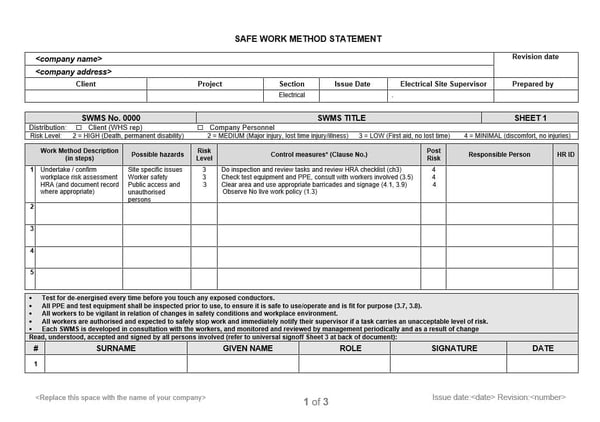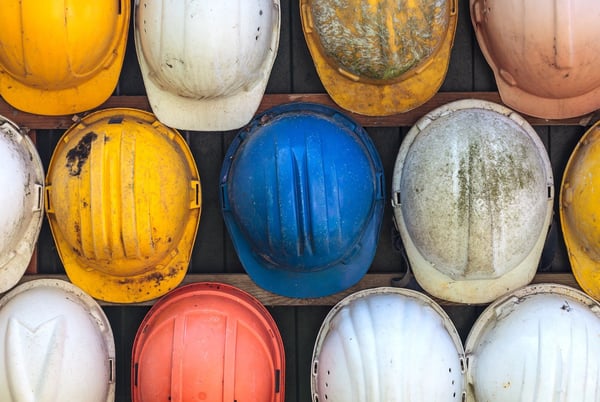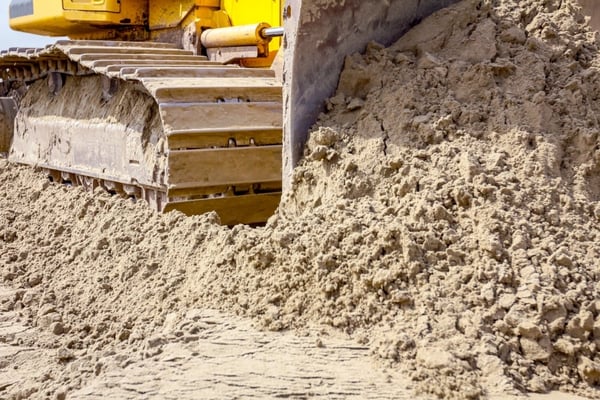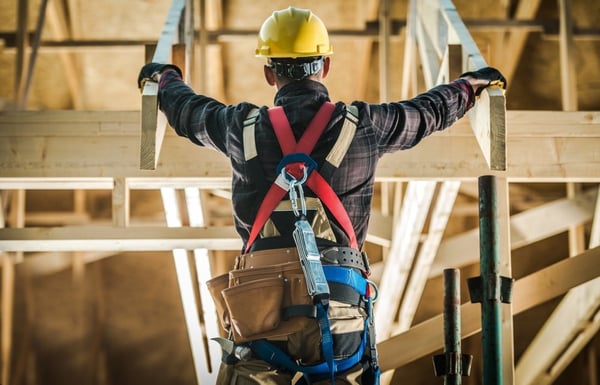Safework Australia confirms that in 2018 there were 144 Australian workers fatally injured while working – of these, 24 were employed in construction and 9 in mining. An increase of 171 fatalities occurred in 2019 and as of the 2nd of July 2020, there have already been 91 Australians killed at work this year. While these figures are certainly alarming, there are some important steps you can undertake to ensure site safety for your workers.
Get quotes from compliant contractors
Tip 1 – Invest the time into preparing the Safe Work Method Statement (SWMS)

An SWMS identifies the high-risk construction activities to be carried out on-site, their associated hazards and the control measures that will be adopted to minimise the risk they pose. While the person responsible for completing the high-risk tasks is best placed to prepare the SWMS, it should be a consultative process and involve key stakeholders such as managers, contractors, leading hands and workers. The document should be socialised with all relevant parties prior to the project starting to ensure that all work is conducted in accordance with the SWMS.
Tip 2 – Build a safety-first culture

With the many pressures of a project, it is easy to prioritise executing the work, as opposed to preparing for it. Ensure that inductions are thorough, workers have the necessary protective clothing, equipment is in good working order and safety signage is deployed around the site and adhered to. The effort upfront can help ensure construction site safety and avoid accidents. A safe site is a productive site.
Tip 3 – Maintain a tidy site

Many construction hazards stem from a messy or cluttered job site and the longer the job, the easier it is for these hazards to increase. Per the Safework Australia study referenced previously, 28% of site injuries stem from slips, trips and falls, many of which could have been avoided by maintaining a neat workspace. Pay particular attention to access and escape corridors, ensuring they are clear of materials, machinery and other debris.
Tip 4 – Ensure equipment is fit-for-purpose and never tamper with it

It is vital that tools and equipment are only used for the purpose they were designed – they are not “one size fits all”. If a tool is required and not available, follow the procedures to procure one and never try to make do with something else. Additionally, if a tool or machine looks like it has an issue or is not working, report it. Do not try and force it to operate, or attempt to repair it unless you are qualified to do so.
Tip 5 – Don’t conduct work unless the space is safe

Increase your work site awareness and assess the immediate environment before undertaking a task. This might include:
- Ensuring guard rails are in place when working at a height
- Trenches are adequately supported before entering
- Not working below crane loads
- Access and exit points are clear
Why is safety important in construction sites?
Like any workplace, employees in the construction industry have the desire (and right) to work in a safe and protected environment. By enforcing a strict safety code, you can keep your workers safe, productive and also sure up a pipeline of talent who want to work for a firm that takes their wellbeing seriously.
Why are construction sites so dangerous?
Construction site safety is a significant challenge given the nature of the work, the machinery, raw and exposed building materials and the large number of workers that can be on-site at any one time. There is a requirement for worker training and induction, suitable protective equipment, tool and machinery maintenance and the safe storing of chemicals, all of which could potentially be overlooked with the time and budget pressures that accompany a modern construction site. These factors, along with a host of other elements, make construction sites a dangerous working environment when safety is not correctly planned, implemented and monitored.
What are common safety hazards in construction sites?
Broadly speaking, the main hazards on construction sites are as follows:
- Working with noise – industrial and occupational deafness, as well as varying levels of hearing loss, can result from operating noisy equipment
- Working with vibrating tools – extended periods of time operating power tools can lead to HAVS (Hand-arm Vibration Syndrome), which can include permanent tingling or loss of feeling in fingers
- Working at height – when working on scaffolding, ladders or roofs, workers are exposed to the risk of falling and even lightning-strikes
- Working with dust – inhalation of different types of dust (such as asbestos) can lead to respiratory and sinus problems and even cancer
- Site accidents – there is a heightened opportunity for accidents to occur from items falling, being caught between moving objects, structural collapses and slips or falls
- Musculoskeletal disorders (MSDs) – often caused by a repetition of tasks, MSDs often occur in muscles, tissue and joints
What are the most common injuries in construction?
According to a Safework Australia report, there were 63,230 serious injuries in construction in the five years between 2008 and 2013. The injuries were caused by the following:
- 37% by body stressing, including lifting, carrying and moving objects
- 28% by falls, slips and trips (of which 44% were caused by falls from a height)
- 17% by being hit by moving or falling objects
- 10% by moving or stationary objects being hit by a part of the body
- 8% by other means
What is the biggest killer in the construction industry?
Safework Australia report that the number of construction fatalities between 2002 and 2014 in Australia totalled 417, which was 14% of the total Australian workplace fatalities over that 12-year period. The largest number of deaths was from “falls from a height”, which represented 28% of construction deaths.
Where does construction rank in the list of the most dangerous industries in Australia?
Measured by fatality, construction ranks as the third most dangerous industry in Australia, accounting for 24 deaths in 2018. Other industries were ranked as follows:
- Transport, postal and warehousing – 38 fatalities
- Agriculture, forestry and fishing – 37
- Construction – 24
- Manufacturing – 13
- Mining – 9
Remember – construction safety is the responsibility of everyone, not just the site and duty manager. Stay vigilant and stay safe. To keep up to date with the latest construction and mining news, subscribe to iseekplant's Constructionsht blog.


